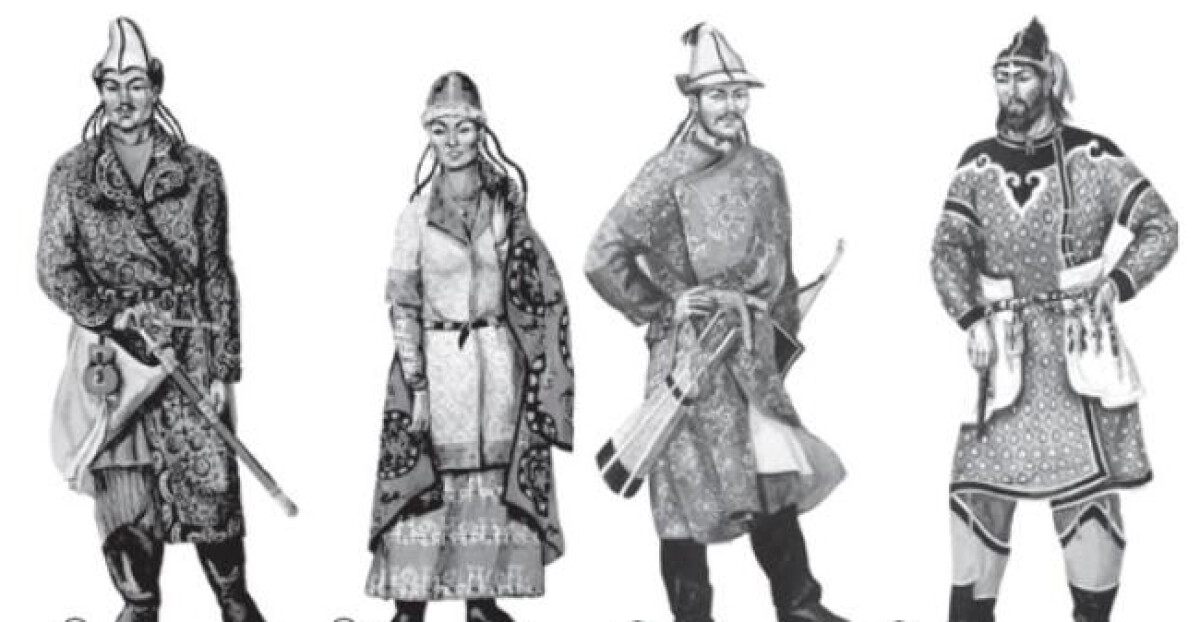
In the second half of the 8th century, Oguzes lost war with Karluks for the Turgesh heritage forcing them to leave the territory Zhetisu (Seven Rivers) and go to the foothills and the valley of the River Chu. In the new land, they had to continue fighting for a living space. However, this time their enemies were Kangar-Pecheneg tribes, who beat the leaders of Oguzes at the beginning of the 9th century, teaming up with former adversaries, Karluks and Kimeks. Their trophy was Syr-Darya and the Aral Sea steppes, the former owners of which, representatives of Kangaroo Pecheneg tribes, were forced to go west.
However, this did not stop Oguzes. At the end of the 9th century, they entered into an alliance with Khazars and won in an unequal battle taking possession of the territory between the rivers Ural and Volga. Thus, a substantial part of the territory of the present-day Kazakhstan was under the control of Oguzes, which is known from Arabic sources as Mafazat al-Guzz or «the Oguz Steppe».
As a result, at the end of the 9th century and the beginning of the 11th century, Oguzes occupied a territory from the middle reaches of the Syr-Darya to the lower reaches of the Volga. Their highest concentration was observed in the middle and lower reaches of the Syr-Darya, the Aral Sea and the eastern Caspian region. Oguz tribes reached the border of the Southern Urals and Lower Volga. Their encampments bordered on settled areas of Khorezm, Khorasan and Mawarannahr.
Initially, the center of the Oguz group was the Seven Rivers region, but in the course of their movement to the west, where they struggled against Khazars and the Volga Bulgars, their territory expanded with the nomadic and semi-settled population of the West and South Kazakhstan.
In the 10th century, the capital of the military-political alliance of Oguz tribes became Yangikent (or so-called New Guz), lying at the crossroads of major caravan routes running through the steppe to the Kimak valleys of Sarysu, Kengir, Ishim and Nura. The city was at the center of trade routes leading to Sygnak and the South Urals. In addition, Yangikent had a favorable geographical location bordering on large agricultural oases of Central Asia, with Khorezm and Mawarannahr.
The supreme Ruler of the Oguz state in the 9th and 11th centuries had the title of Jabgu (Yabgu). This suggested that they were heads of the independent state and they did not consider themselves able to bear the title of Kagan. The Oguz Jabgu had deputies called Kul-Erkins. An important role was played by the leader of Oguz troops who had the title of «syubashi». He relied on a military council. The troop leaders intervened in political events and sometimes even opposed Jabgu [1].
The power of the supreme ruler was hereditary, and their children had the title of «Inals». In childhood, they were brought up by specially appointed guardians, Atabeks. The Oguz Jabgus’ and other Turkic rulers’ wives had the title of «Khatun» and played a significant role in the life of the court.
Oguz khans were elected at the Council, which is transformed relicts of the people assemblies of a military democracy era. However, such councils were rarely gathered, and the main role in the daily life of the nobility was played by the council of the noble (Kankash). In those cases, when the people’s congresses were convened, the main topics were brought up by Oguz aristocracy.
The Oguz rulers were elected from the most powerful Urugs of the khan and election itself was held in compliance with the torus, a set of unwritten rules of the customary law. It was based on the privilege for power of an older man over a younger family member [2].
The residences of khans, who headed large associations, were fortified headquarters, where they kept the treasury and supplies.
The first mention of the state of Oguzes was found in Arabic historical and geographical writings of the 9th century and the beginning of the 10th century. Thus, the researcher al-Yakubi described their wars with neighboring Turkic tribes: Karluks, Toguz-oguzes and Kimaks. Some interesting facts about Oguz tribes of the 9th-10th centuries were described in a geographical work by Ibn al-Faqih, which states that Oguzes, together with Kimaks and Toguz-oguzes were «kings» (maliks) and were highly esteemd by Turks [3].
As Arabic sources say, before the conquest of lower reaches of Syr-Darya and the Aral Sea region by Oguzes, the Oguz dynastic rulers had a residence, which was called the Old Guz. It was described as a capital city. Presumably, it was located between the western spurs of the Tien Shan, the Chu River and the Syrdarya Karatau [4].
1. History of Kazakhstan: from ancient times until today, in five volumes. Almaty: «Atamura», 2010. Volume 1. 544 pages. Page 317
2. Ibid.

